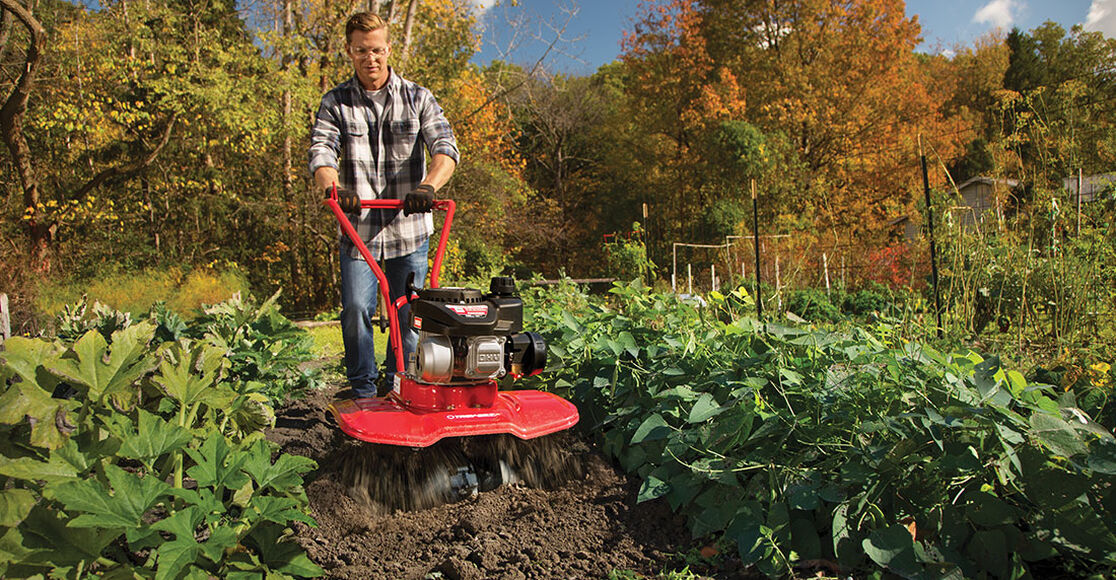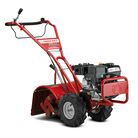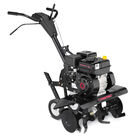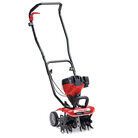Now that winter has passed, it’s finally time to get back to your garden. But before you start to plant, your soil may need some TLC to get back to prime condition; plants need an extra boost of nutrients, like nitrogen and phosphorous, to recover from winter. Tilling is one simple garden chore that can add these nutrients and loosen the soil to promote healthy plant growth. Cultivating on an annual or semi-annual basis not only eliminates weeds, but it also loosens and aerates the soil for better moisture absorption and faster plant growth.
Before You Till
You should always check the state of your soil before tilling. Avoid tilling in wet soil, as soil compaction can occur and lead to poor root penetration in the growing season. If it rains, it’s best to wait a few days to allow soil to become semi-dry. To determine if soil is in working condition, simply pick up a ball of soil; if it falls apart in your hand when you poke it, then it is dry enough to be tilled. If it stays together in a ball, then it is too wet and needs more time to dry. However, watering the garden area a few days prior to tilling will make tilling easier.
When tilling, avoid trying to dig too deeply too quickly, especially when busting sod or when tilling soil that hasn’t been tilled for some time. Use the shallow depth regulator settings – only an inch or two deep – for the first passes through the garden area. With each succeeding pass, adjust the depth regulator to dig an inch or two deeper.
Once you’ve completed an initial tilling of the area, it can be beneficial to water the area and let the newly worked soil set for a day or two before making a final, deep tilling pass. This ensures a well-aerated bed for planting.
Tilling Do’s
- Always read your owner’s manual prior to using your tiller. All models are slightly different, so you’ll want to read the directions to ensure you’re operating properly.
- Use a shallow tilling depth for dry, compacted soil or a medium setting for soft ground.
- Engage the drive and slowly create parallel lines, similar to the process you follow when mowing the lawn. Look down, behind you, and use care when in reverse or pulling the machine toward you. Once you finish the parallel rows, rearrange the tiller to its deepest depth and create rows perpendicular to the rows you just made.
- While tilling, relax and let the wheels pull the tiller along while the tines do the digging. Walk on the side that is not yet finished to avoid making footprints in the freshly tilled soil. Always be sure of your footing and keep a firm hold on the handles.
- Be careful when tilling in hard ground. The tines may catch in the ground and propel the tiller forward. If this occurs, let go of the handlebars and do not restrain the machine.
- Exercise extreme caution when operating on or crossing gravel surfaces.
- Till about 6-8 inches deep, unless your plants benefit from a specific depth. Consult your seed packets or local nursery for more information.
- If you are tilling a smaller, established landscape bed, consider using a front-tine tiller. This design allows for the tiller to cut, dig and turn soil in smaller areas.
- If you strike a foreign object, stop the engine; disconnect the spark plug ignition wire and ground it against the engine. Thoroughly inspect the machine for any damage. Repair the damage before starting and operating.
- Use only attachments and accessories approved by the manufacturer. Failure to do so can result in personal injury.
Tilling Don’ts
- Do not pick a spot of land and start tilling right away. Before you select your garden location, call 811 to be connected to your states’ One Call Center, which can locate and mark utility lines before you dig.
- Do not leave any debris in the garden. Clear away rocks, sticks and other loose foreign items that can be hazardous to you and the tiller’s tines.
- Do not leave sod mixed in with the soil. The grass can become tangled in the tines and must be removed. Also, grass may begin to resurface as temperatures rise.
- When tilling, avoid pushing down on the handlebars in an attempt to force the tiller to dig deeper. Do not put hands or feet near rotating parts. And never operate your tiller without good visibility or light.
- Do not till excessively during the year. Excessive tilling can lead to compacted soil and poor garden production.
- Do not start to plant right away after tilling. Leave the soil alone for a day or two so any compost, organic materials or soil enhancements have time to decompose and add nutrients into the soil.






